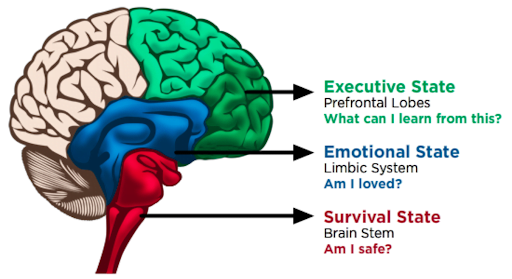Parent Resources

Regulation occurs when we create a felt sense of safety in the body, soothing the fight-or-flight response to danger that activates in the lower areas of the brain. These lower brain regions communicate to the full body through the ventral vagus nerves, which connect to all major organs to inform our physiological responses to emotional activation. Since the vagus nerves operate as a two-way communication system, it means that not only does the brainstem danger response speak directly to the body, the body can also speak directly to the brainstem. This makes physical regulation in the body our most powerful tool in communicating with our lower brain function, and how we move, breathe, and sense with our body can inform our brain with the felt sense of danger or safety.


A simple example of self-regulation is deep breathing; when we give a long, slow exhale our lungs trigger specialized internal sensors that communicate safety directly to our brains. In fact, nearly any activity that we might use to soothe a crying infant can also regulate our own brainstems. When babies cry, they are operating from a reptilian response to danger, seeking help and comfort from their parents as a life-saving survival mechanism. Older children and adults can fulfill this same function for their own nervous systems by soothing their bodies with a gentle voice, rocking back-and-forth, hold a hand on their chest, and focusing on the five senses of touch, sight, smell, sound, and taste to soothe the automatic nervous system. By regulating the body, the brainstem survival response can ease into a state of comfort and safety, and we can once again utilize our full cognitive brain function to make new choices in the present situation.
